'Jaipur' review aiming for success as a king's merchant while buying and selling gold and silver treasures and camels

'Jaipur ' is a two-player card game that builds wealth while buying and selling gold, diamonds, spices, camels, etc. as a merchant of Maharaja (King) in
Jaipur | | ANALOG GAME INDEX
http://hobbyjapan.games/jaipur/
The Jaipur package depicts a cool Indian merchant surrounded by silver and gold products, luxurious cloth and more.

The target age is 10 years old and over, the play time is 30 minutes, and the number of players is assumed to be 2.

When you open the lid, it looks like this. The contents fit neatly.

The contents are 55 item cards.

Seven types of item cards are available: gold, silver, diamonds, spices, cloth, leather, and camels.

One camel token and three proofs of excellence.

The 38 item tokens have the same color as the item card, and there are 6 types.

A number indicating victory points is on the back of the item token. Victory points are also written on the table for item tokens.
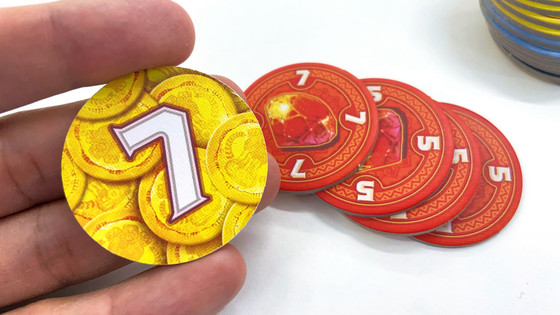
1 camel token and 18 bonus tokens.

There are 3 types of bonus tokens, and 3 to 5 cards are drawn. The number is written on the back of the bonus token in the same way as the item token, but in the case of the bonus token, the number cannot be known unless it is turned inside out.

And a heavy die-cast 'Jaipur' medal. This medal is a bonus item commemorating the 10th anniversary of the release of Jaipur. You won't use this medal in the game, but you can also use it to decide the first and second strikes of the game, or to give it to the winner.

Before starting the game, first remove only three camel cards from the item card and place them in the center of the table.

Then shuffle the remaining item cards into a deck, take the top two and place them next to the three camel cards. The five cards placed in the center of this table are called the 'market'.
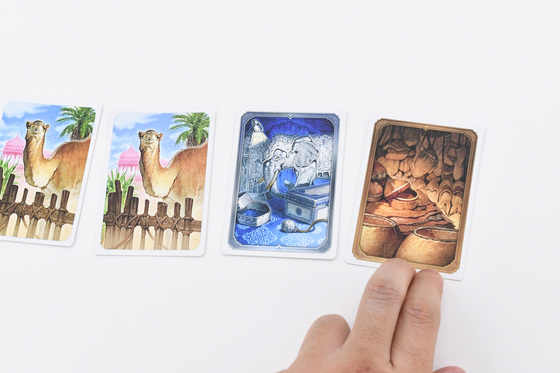
From the remaining deck, deal 5 cards to each player as a hand.

If you have a camel card in your hand ...

Place it sideways in the area in front of the market as shown below. The camel placed next to it becomes your 'livestock' and your property.

Arrange item tokens, bonus tokens, and 3 proofs of excellence, and place the remaining deck. In addition, item tokens are arranged in descending numerical order from the top for each type, and bonus tokens are shuffled and stacked in order with the table facing up.
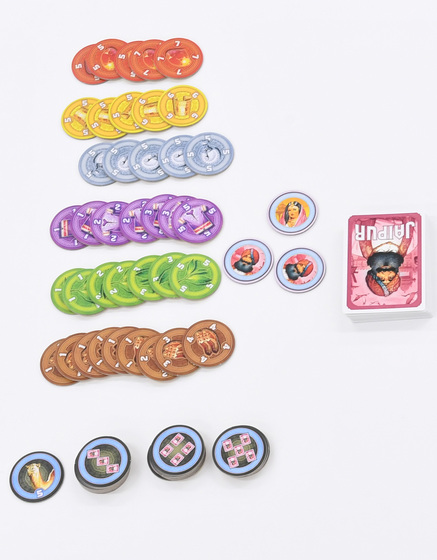
The game is now ready.

The rules of the game are very simple. Players either 'take an item card ' or ' sell an item card ' once in their turn. The winner is the one who collects a lot of victory points written on the tokens that can be obtained by selling the card.
If you take one item card from the market ...

Draw one from the deck and place it in the empty space.

You can also get multiple item cards from the market.
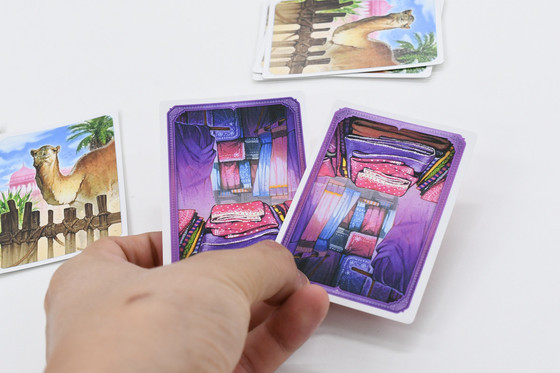
However, if you want to get more than one card, you have to replenish the same number of cards from your hand instead of the deck.

In other words, if you get multiple item cards from the market, you will have to exchange them for your hand.
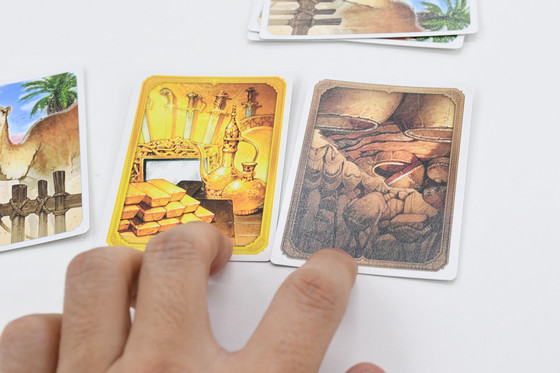
When you get a camel card on the market, you have to get all the camel cards on the market, unlike other goods cards.
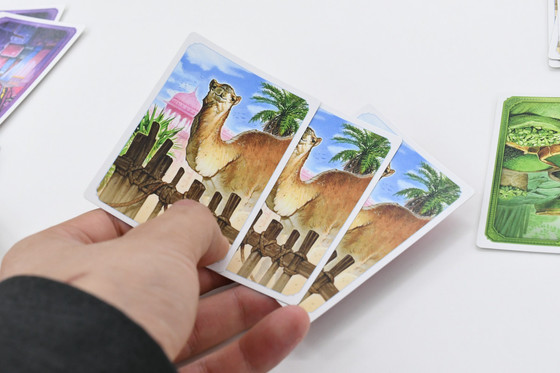
Place the acquired camel cards sideways in the 'livestock' area in front of you.
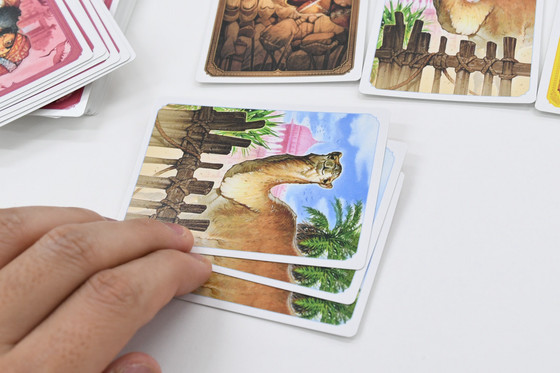
And the vacant space is replenished from the deck.
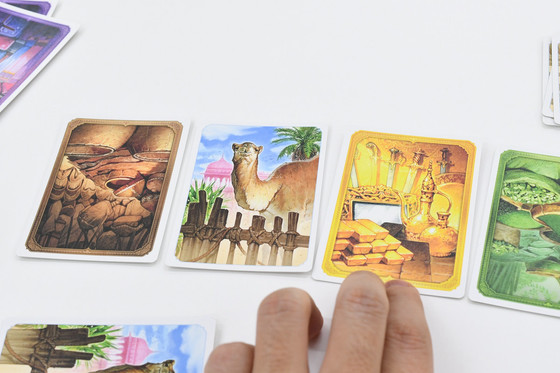
Actually, the camel made into this livestock is very important. For example, if you want two spice cards from the market, but you can't or don't want to get two out of your hand ...
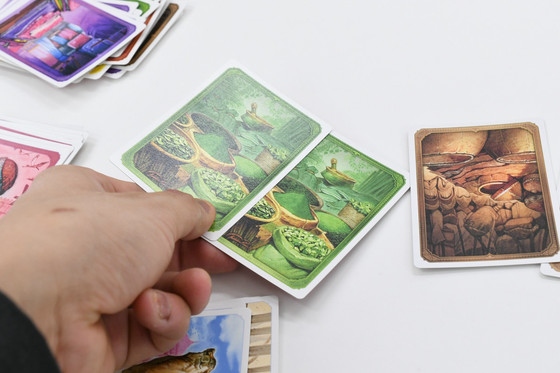
You can exchange livestock by presenting livestock instead of your hand. In addition, livestock can be exchanged by combining cards in their hand. In other words, livestock is a card that can be used as a replacement material in the event of an emergency.
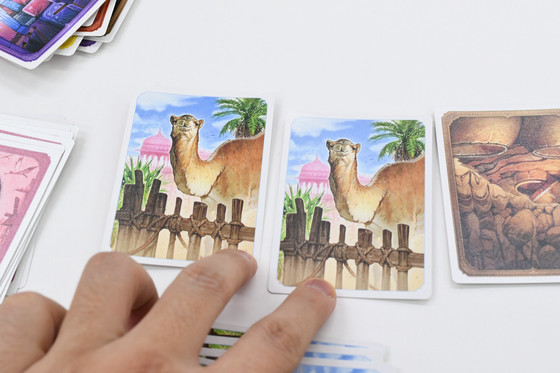
Items collected in this way can be sold by discarding them. For example, I have 3 'cloth' cards in my hand ...

Discard 3 cards. Only one type of item can be sold at a time. In addition, 'spices', 'cloth', and 'leather' can be sold from one piece, but luxury goods 'gold', 'silver', and 'diamond' can only be sold from two pieces.
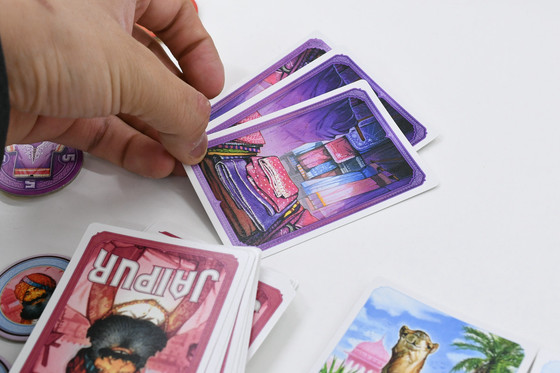
I sold 3 'cloth' cards, so I got the same purple item tokens as the 'cloth' cards from the top. Since the victory points of the item tokens are arranged from the top in descending order, the earlier you get the item tokens, the higher the score you can aim for.
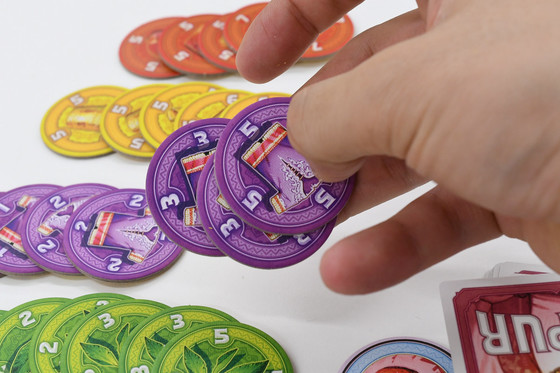
Also, if you sell 3 or more cards at the same time, you will get a bonus token. Since we sold 3 cards this time, we will get a bonus token with 3 card icons drawn. If you sell 4 cards, you will get a bonus token with 4 icons, and if you sell 5 or more, you will get a bonus token with 5 icons. The higher the number of card icons, the higher the number of bonus tokens.
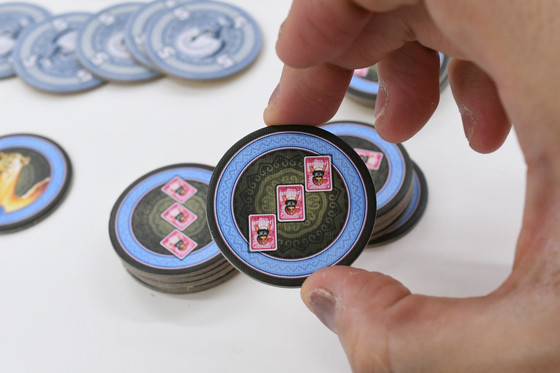
While collecting and selling cards, we will steadily collect tokens.
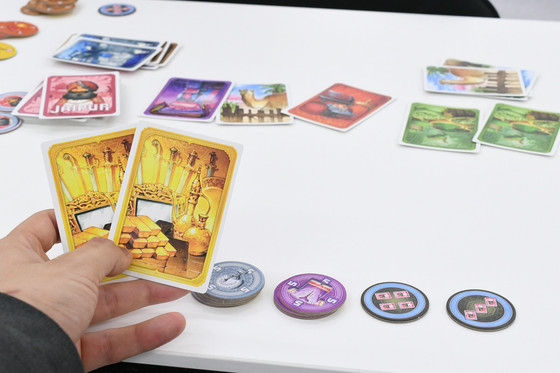
For example, the following hand contains 'silver' and 'gold' with high token points. Since there is only one piece of 'silver', it cannot be sold, but since there are two pieces of 'gold', it is ready for sale.
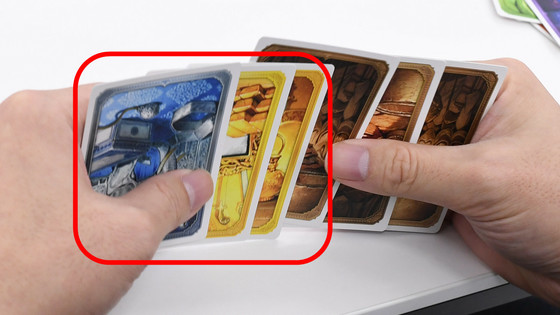
However, I decided to sell three pieces of 'leather' first. 'Leather' has a lower score per token than 'Gold' and 'Silver', but you can get bonus tokens by issuing 3 cards.
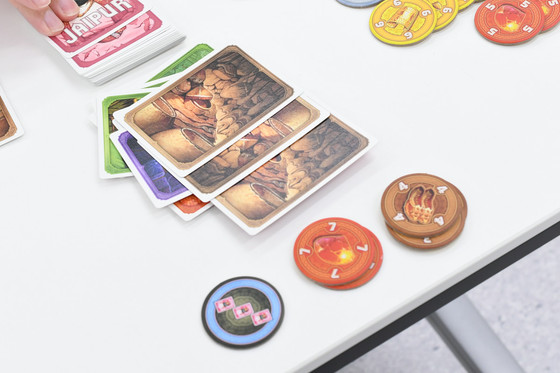
After that, a 'gold' card appeared on the market, so I bought it immediately and sold 3 'gold' in the next turn to get 3 item tokens and 1 bonus token. It is an important strategy not only to sell out a large number of cards in your hand quickly, but also to increase the number of cards sold at one time by waiting and aim for additional points with bonus tokens.
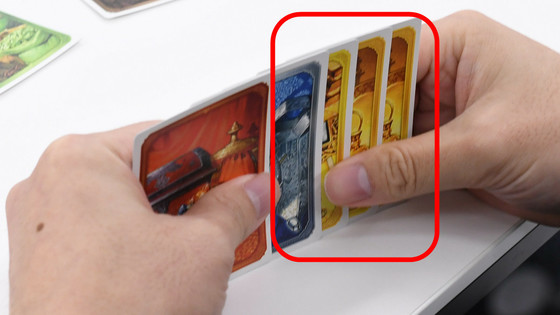
After that, he secured two 'silver' on the market and succeeded in selling four 'silver' at a time. At the same time, I got a bonus token.
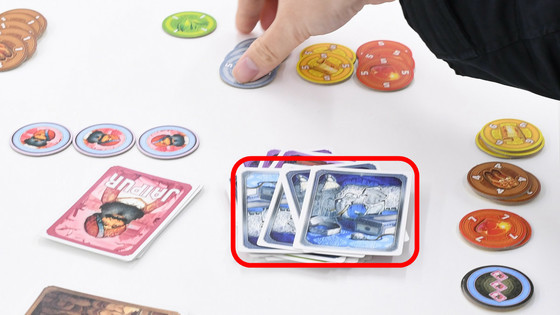
The other party also puts out four 'cloth' cards for sale ...
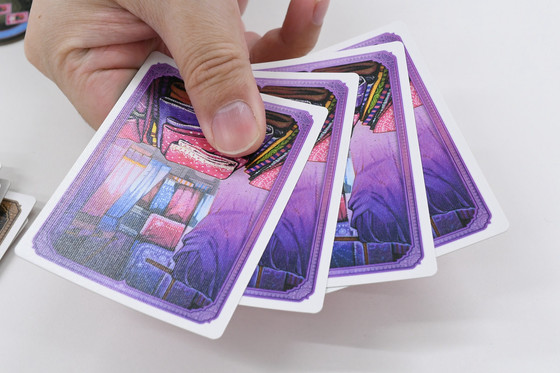
I brought all the remaining 4 'cloth' item tokens.
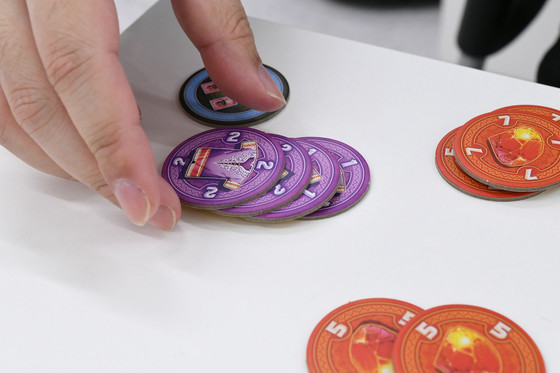
After that, 3 'diamonds' were put up for sale ...
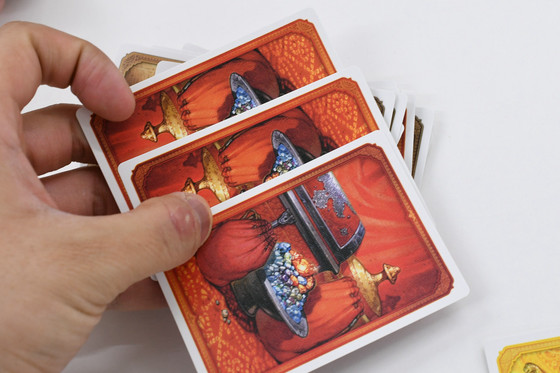
Obtained 2 remaining 'Diamond' item tokens.
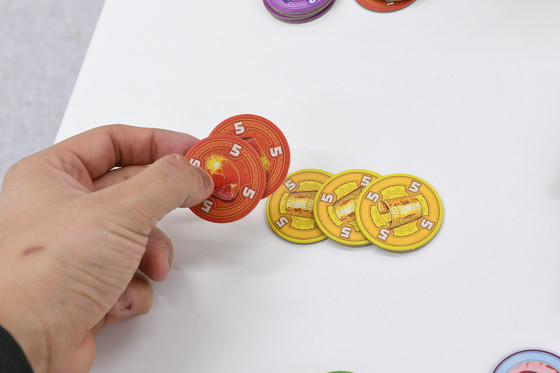
Now that you have run out of 3 of the 6 item tokens that were in play, the game is over. The game ends when the 3 types of item tokens are exhausted or when the deck of item cards is exhausted.
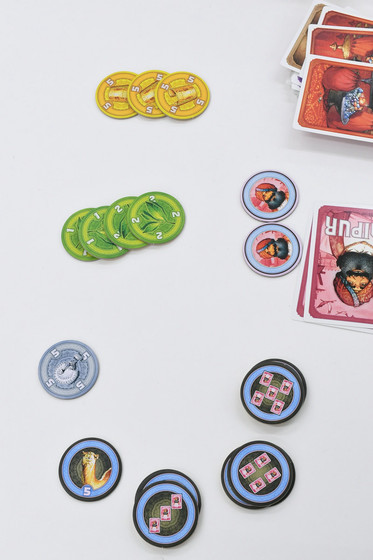
Each player flips over all the tokens he has earned and sums up the numbers written.
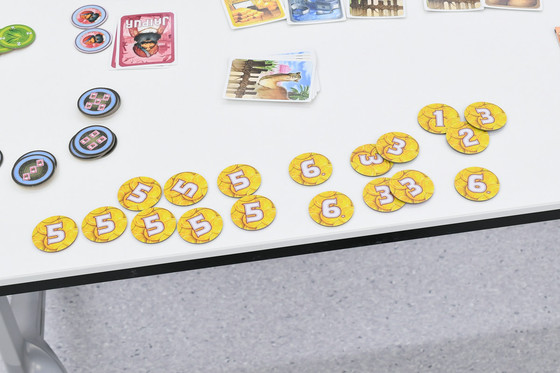
Also, those who own more livestock at the end of the game will be awarded a livestock token with 5 victory points.
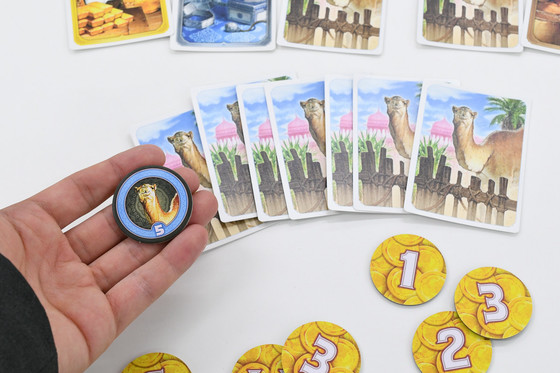
Ultimately, the one with the highest total victory points will be given a 'proof of excellence'. The player who collects two proofs of this excellence wins. In other words, the person who wins in three games with two wins first wins as a merchant in Maharaja.
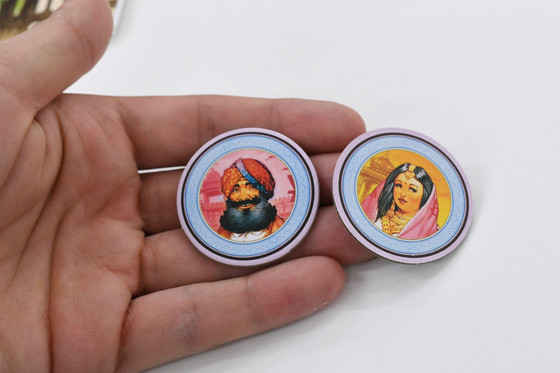
Jaipur is a very simple rule that even beginners who are new to analog games can easily understand. One match is about 10 to 15 minutes, so one game of three games is about 30 to 45 minutes. There is a 'luck' part about what kind of cards will come out, but there is also a 'strategy' part about how to buy and sell cards, so you can play quickly and the replayability is quite high. It's very compact with little content and doesn't require a lot of space, so it's a game that you can play anytime, anywhere.
The Japanese version of Gyple is available on Amazon.co.jp and can be purchased for 3000 yen including tax at the time of writing the article.
Amazon | Hobby Japan Jiple Japanese Version | Board Games | Toys
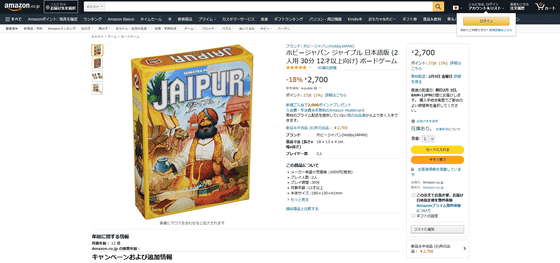
Related Posts:







